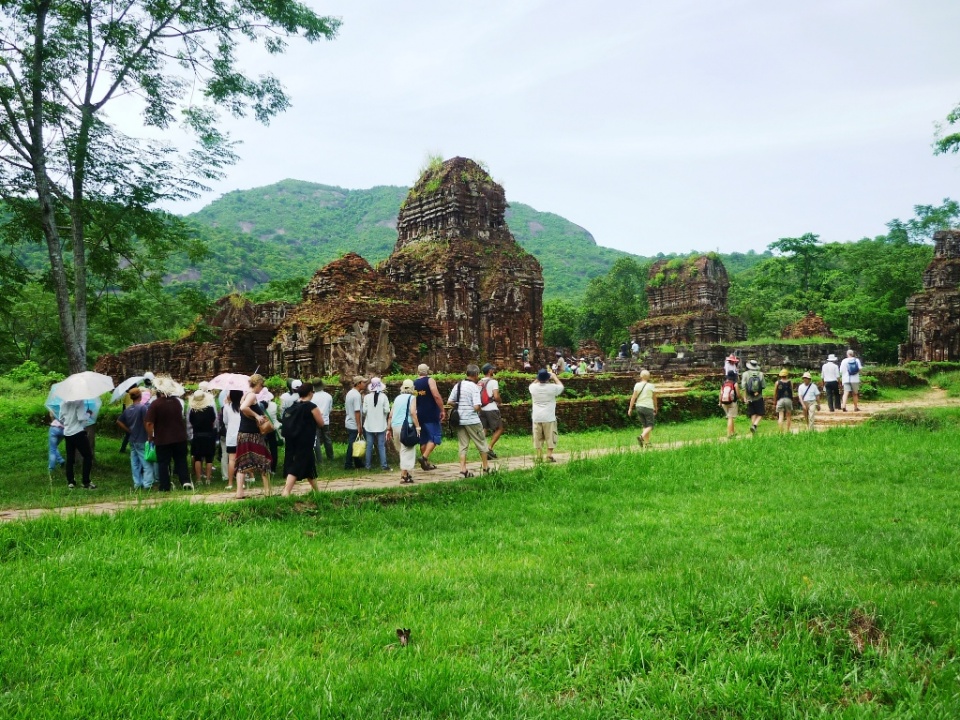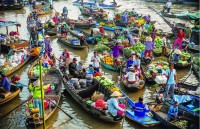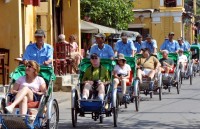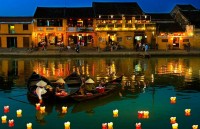
Vietnam strives to preserve My Son heritage site
Latest
| TIN LIÊN QUAN | |
| Quang Nam launches new destinations | |
| Quang Nam: Int’l Silk and Brocade Culture Festival opens | |
In 2008, then Prime Minister Nguyen Tan Dung approved the project to conserve the relic in an area of 11,160 ha in 2008-2020, aiming for sustainable conservation of the relic in line with the country’s development.
The project comprises two phases. The first, implemented from 2010 to 2016, aimed to collect scientific data, clear all remains of bombs and chemical toxins left in the area as consequences of war, as well as improve infrastructure and recover the local forest. The second phase to restore highly-collapsible relics began in 2016.
 |
| My Son Sanctuary in Quang Nam Province. (Photo: Anandi.vn) |
Once the religious and political capital of the Champa Kingdom, My Son relic site is located in a hilly landscape in Duy Phu commune, Duy Xuyen district, about 70 km southwest of Da Nang city and 40 km from Hoi An city.
It comprises eight groups of 71 monument built throughout the 7th -13th centuries.
The temples in My Son were built into groups that basically followed the same model. Each group was comprised of a main sanctuary (Kalan), surrounded by towers and auxiliary monuments. The towers, topped with tiled, covered roofs, were stocked with offerings and sacred objects of the pilgrims. Cham temples do not have windows, so they are very dark inside. Windows are found only in the towers.
However, there were only about 20 towers remaining.
Quang Nam province has focused on protecting the historical and cultural values of the relic, with programmes re-enacting ancient Cham people’s festivals in the My Son Sanctuary will be held soon. In addition, local authorities have banned gas-powered vehicles in the 320-ha core area of the site.
Apart from activities to conserve the heritage, the My Son World Heritage site Management Board has made forest protection an important task. It has established guard units and procured equipment to prevent forest fires, while tackling poaching.
Indigenous plants have also been planted to increase forest coverage and preserve valuable breeds.
To raise the efficiency of forest protection, the management board devised measures to enhance forest posts and patrol units along with communication campaigns to raise awareness about environmental protection and forest management.
 | Festival promotes culture of Cai Rang Floating Market The second Cai Rang Floating Market Culture and Tourism Festival kicked off in the Mekong Delta city of Can Tho on July 7. |
 | Vietnam among world’s fastest growing travel destinations Vietnam was recently listed among the world’s 20 fastest growing travel destinations by the United Nations World Tourism Organisation. |
 | Online tourism development - an inevitable trend in Vietnam The development of online tourism in Vietnam is an inevitable trend as the non-smoking industry is strongly affected by technological advances. |

















